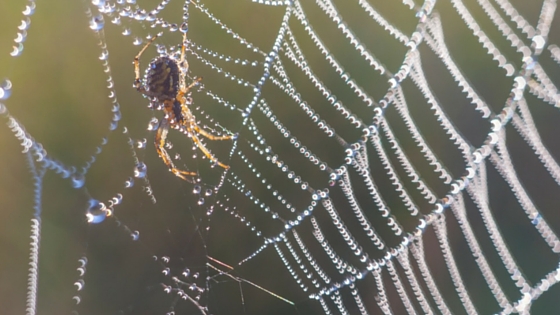Technological breakthrough seems to accelerate every month, especially as new approaches to tech innovation take hold. For example, scientists studying a field known as biomimicry are increasingly looking to nature for new design ideas.
This new field is attracting researchers for two reasons:
- We already know the designs work because nature uses them every day.
- There is a seeming endless supply of ideas embedded in nature just begging to be adapted into modern technology.
The potential is enormous, in other words, and we're just beginning to scratch the surface.
3 Amazing New Technologies Inspired by Nature
News in the tech world — as reported by this article from Technology.org and this article from TheScienceExplorer.com — have given us an astonishing glimpse of some of the latest biomimicry innovations coming down the pipe, including these three tech wonders:
1. Super-Sized Mega-Telescopes Made Possible By Tiny Nanostructures
Researchers have discovered a new way to make extremely light-weight, ridiculously thin optical devices. Their inspiration? The catenary.
The caternary is the natural geometric curve that appears in things like spider's web or when a vine is hanging between two points. It's famous in science circles because its shape naturally creates equal phase distribution across the length of the curve (which is really hard to achieve.)
We see it in the way a chain curves as it hangs freely between two poles. This curve and its unique phase distribution capabilities has thus far been used in architecture — in bridges, mostly. But now scientists have figured out how to essentially bend light into catenary curves within the tiny area of nanostructures, which creates an equal phase distribution effect in light transmission.
What does this mean in plain English?
It means they can now build extremely lightweight optical devices and lenses, which means they can build huge telescopes that will see further into the universe than anyone has ever imagined. So when you see the news that they've built a telescope the size of Yankee Stadium that can see to the other side of the universe with perfect visibility, you can thank the catenary.
2. Snake Scales In Your Phone
Snakes like friction. They use it to travel. They're slithering is essentially the energy of their muscles creating friction between their bodies and the ground. However, they're able to use friction extremely efficiently — just enough to get moving but not too much friction because it would damage their bodies. The friction-reducing aspect of snake skin is what amazes scientists.
A team of researchers at the Karlsruhe Institute of Technology has stumbled upon a new technology, modeled closely after snake scales, that gets rid of friction in systems that have moving parts. The scientists used laser-cutting techniques to reproduce a snake scale design in a steel bolt. The scales got rid of the friction between the bolt and the rotating plate around it.
The potential is enormous: this new snake skin technology will be applied to everything from prosthetic joints to the tiny moving parts inside smart phones to avoid wear and tear.
3. Drones with Swan Necks
It's mystified people for ages: how on earth do birds flap their wings so violently when they fly, yet keep their heads — and in the case of swans — their necks, so still?
Engineers look at it as a wonder of physics. The flexible necks of swans compensate for all the jarring motion during flight. It somehow absorbs it and compensates it instantaneously.
Engineers at Stanford took a look at how swan necks work, and they found that its built like the suspension in a car to make bumps less bumpy. These engineers are working on a drone design that allows long extensions of the camera — like a swan's neck — to keep it perfectly still even as the drone whips around in different directions during flight.
Bringing the Modern World Back to Nature
In an age in which nature inspires our technology and our technology is beginning to become self-aware and behave like humans, the line between technology and the rest of life on this planet is becoming more and more blurred every day. In a way, biomimicry is getting modern humanity back in touch with nature by joining our best and brightest ideas with those in Nature's vault. And, thankfully, nature hasn't patented any of its designs.








